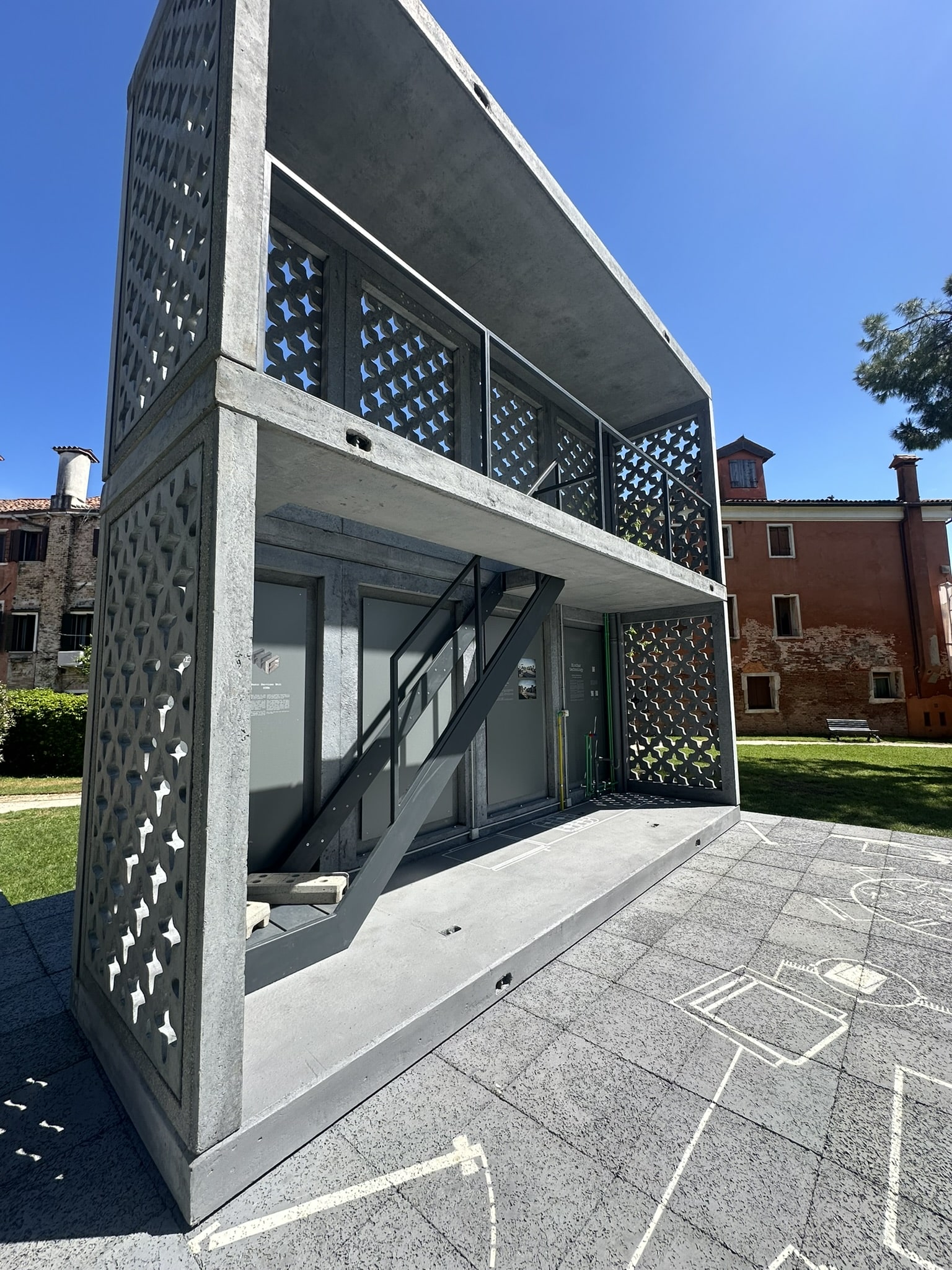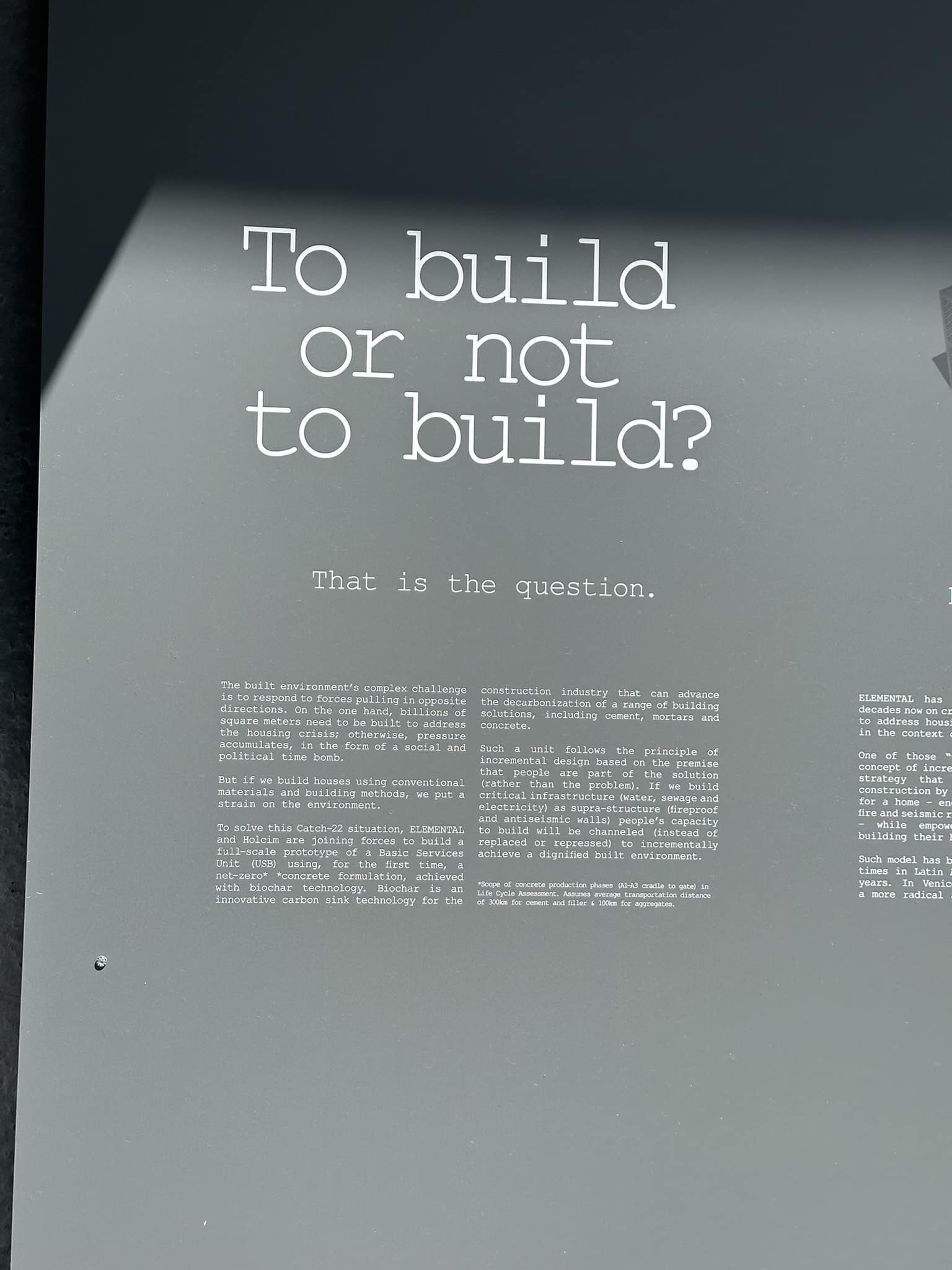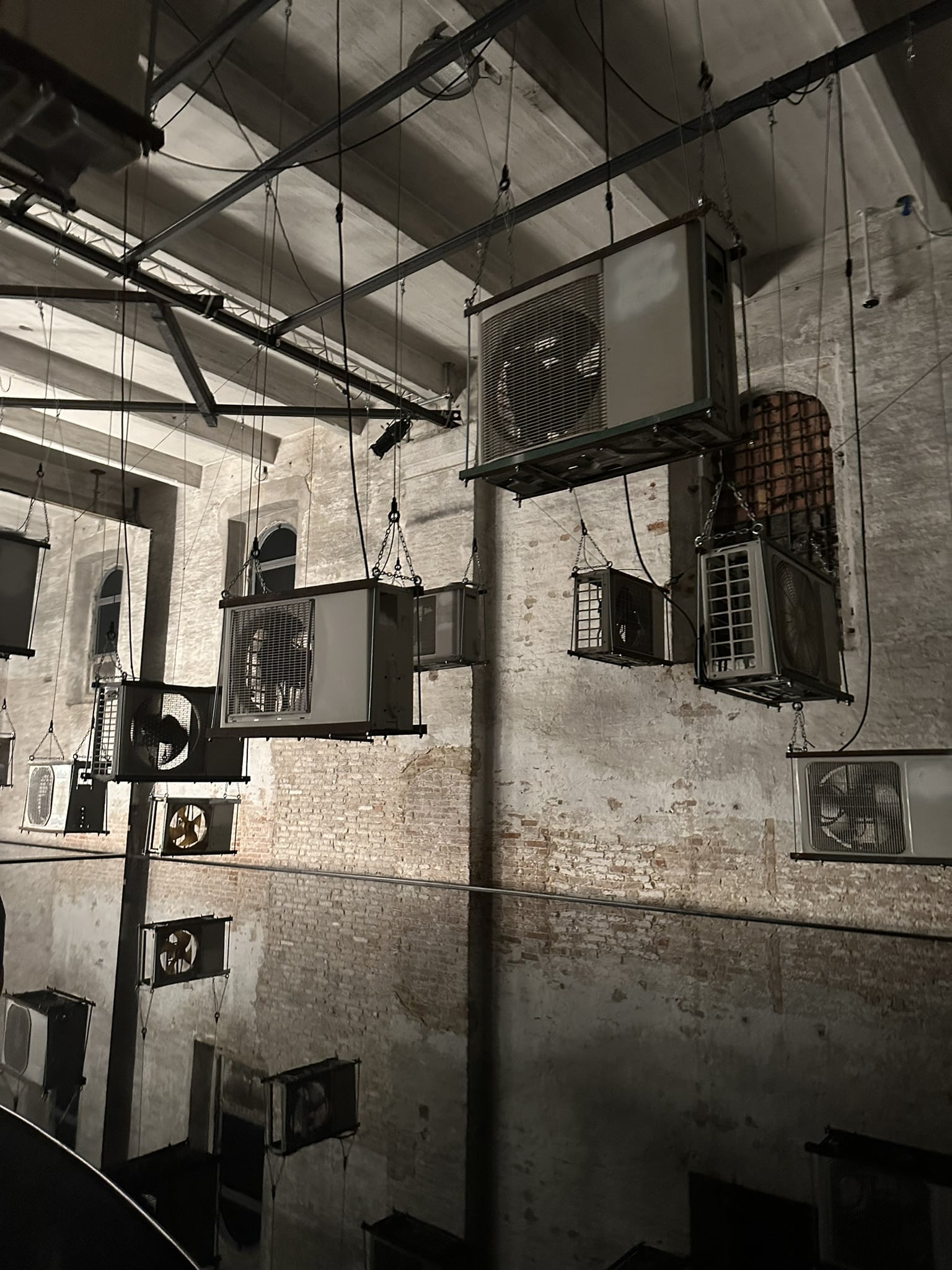Our colleague Vera was invited to attend the pre-opening of the Venice Architecture Biennale by our friends at Bauhaus Earth.
In this blog, she reflects on the days she spent exploring the exhibitions — from filtered canal coffee to banana-based building materials — and shares five fragments that stayed with her.
The first thing I felt upon entering the Arsenale was a very warm wave of air caused by many AC exhausts. It was definitely a welcome — a confronting one, by @abdbcb with @transsolar_klimaengineering @bilgekobas and @ethzurich. As they point out: In the climate-controlled interiors of buildings around the world, the costs of comfort are forgotten, and unstable futures endlessly deferred. My question is: Will this be our future?
This year’s Venice Biennale is framed around Intelligens — natural, artificial, collective — yet what stood out to me most were not the AI-driven experiments, but the down-to-earth work rooted in natural intelligence.
While tech-heavy installations were impressive at the show, I found them also dissonant. They exposed just how much material, energy, and data infrastructure is needed to keep our so-called ”progress” alive.
The overall exhibition left me with many thoughts, of which one is: the way of ‘organizing’ is on the most political forms of human intelligence. Showcasing social ánd climate justice, by arch lobby official.
The answer isn’t Artificial Intelligence — it’s us. Humans. Low-tech. Local. Relational. In this piece, I explore five fragments that show why going back to basics may be the most radical move we can make.
1. Built by Hand and Time
What stayed with me most wasn’t the flashy tech, but the things built by hand, by people.
The Moroccan pavilion: Materiae Palimpseste, made from rammed earth, felt warm and solid. I touched the wall and imagined the hours, the hands, the care. We rarely count labour in time anymore — only in cost. The Slovenian pavilion (called Master Builders) showed this beautifully with its totems, measured not in euros, but in hours of human handcraft and material use. It felt almost radical — to centre value in effort, not efficiency.
Then there was the Spanish pavilion INTERNALITIES – Architectures for Territorial Equilibrium — one of my favourites for sure. High on information, full of inspiring examples, and with an impressive selection of handcrafted earthy materials. Among them, a modular structure that showed how space-making, temporality and material reuse can go hand in hand.
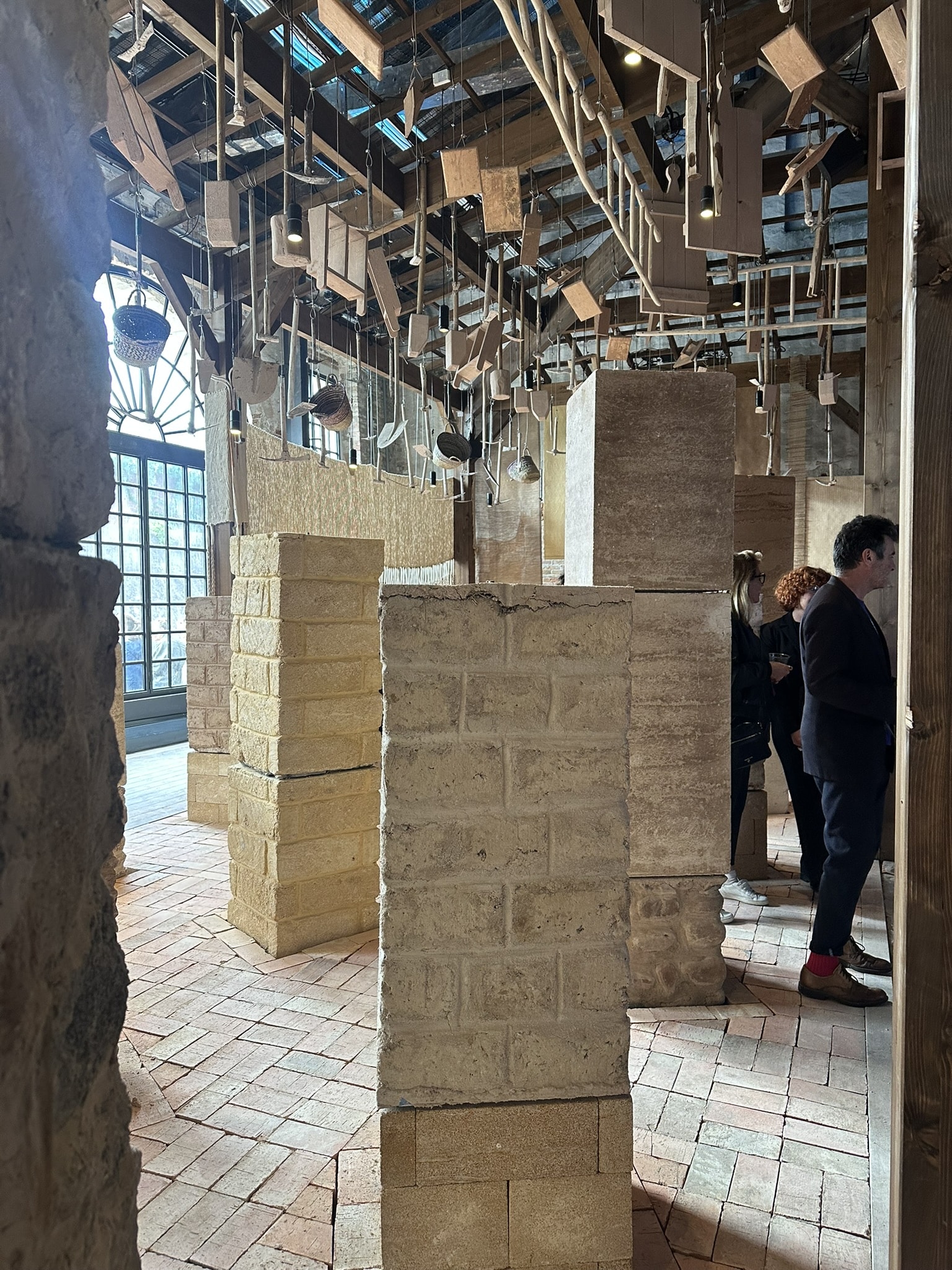
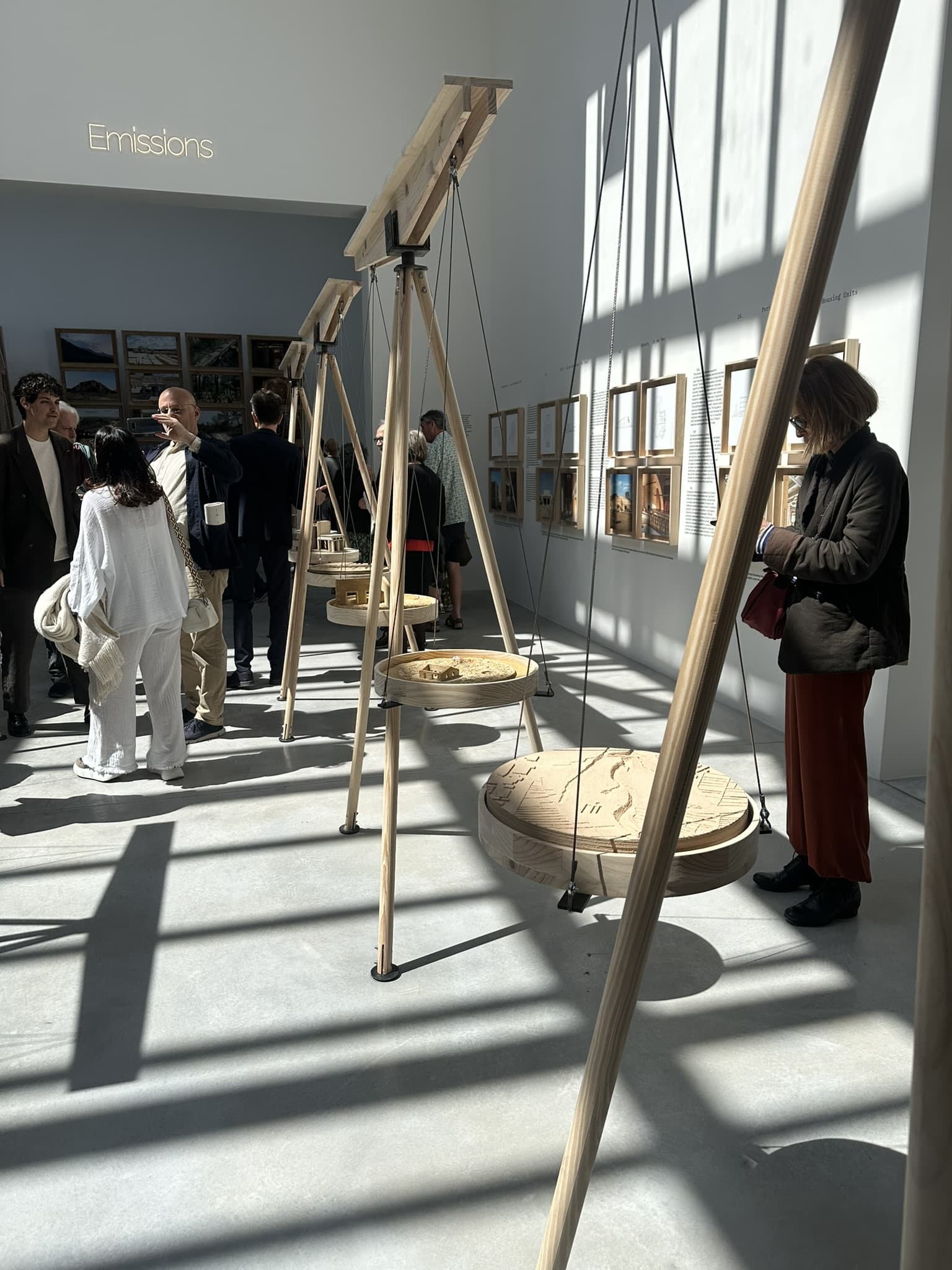
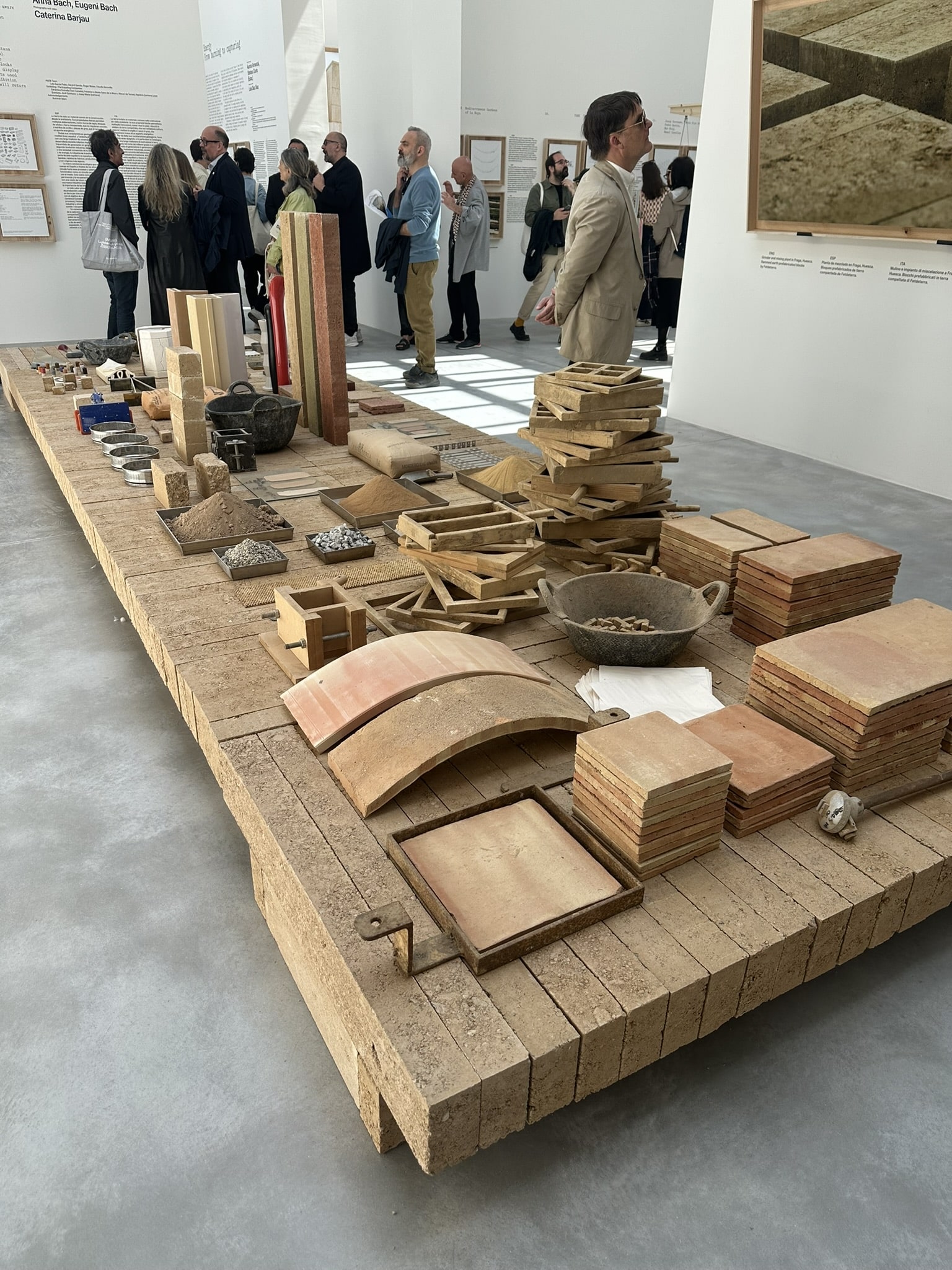
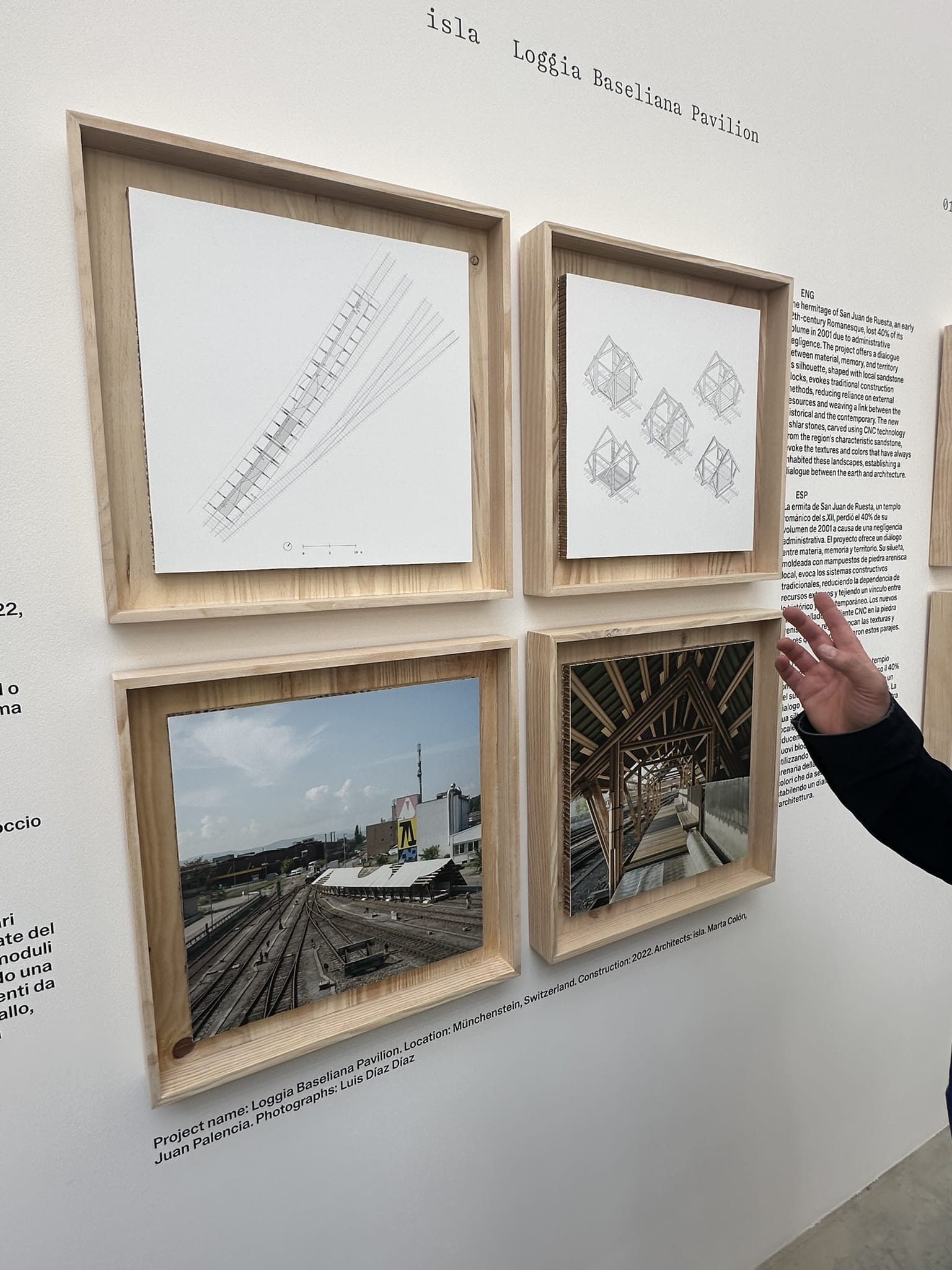
2. From Canals to Clouds
Water was everywhere at the Biennale — not just symbolically, but in systems, stories and warnings. Just like at Dutch Design Week, the hidden water use of AI came sharply into view. Stepping into the Chilean pavilion: Reflective Intelligences with a strange smell (was it a part of the expo?), it became clear how much water is needed to cool data centres. We should stop imagining “the cloud” as weightless and invisible — it’s not. It’s heavy, material, and deeply entangled with our physical world.
Then came something that brought a sense of hope: the chinampas in the Mexican pavilion. During my graduation research, I explored these ancient floating gardens and their potential for regenerative, off-grid food systems. Seeing them here — not in a paper or diagram, but as part of a living design story — was powerful. It felt like something truly timeless still had a future. Another quiet but meaningful moment: drinking a cup of coffee brewed with filtered canal water. Shifting perspectives hey. Fair enough it won the Golden Lion Award.
It left me thinking: water isn’t just infrastructure — it’s intelligence. It moves, connects, nourishes.
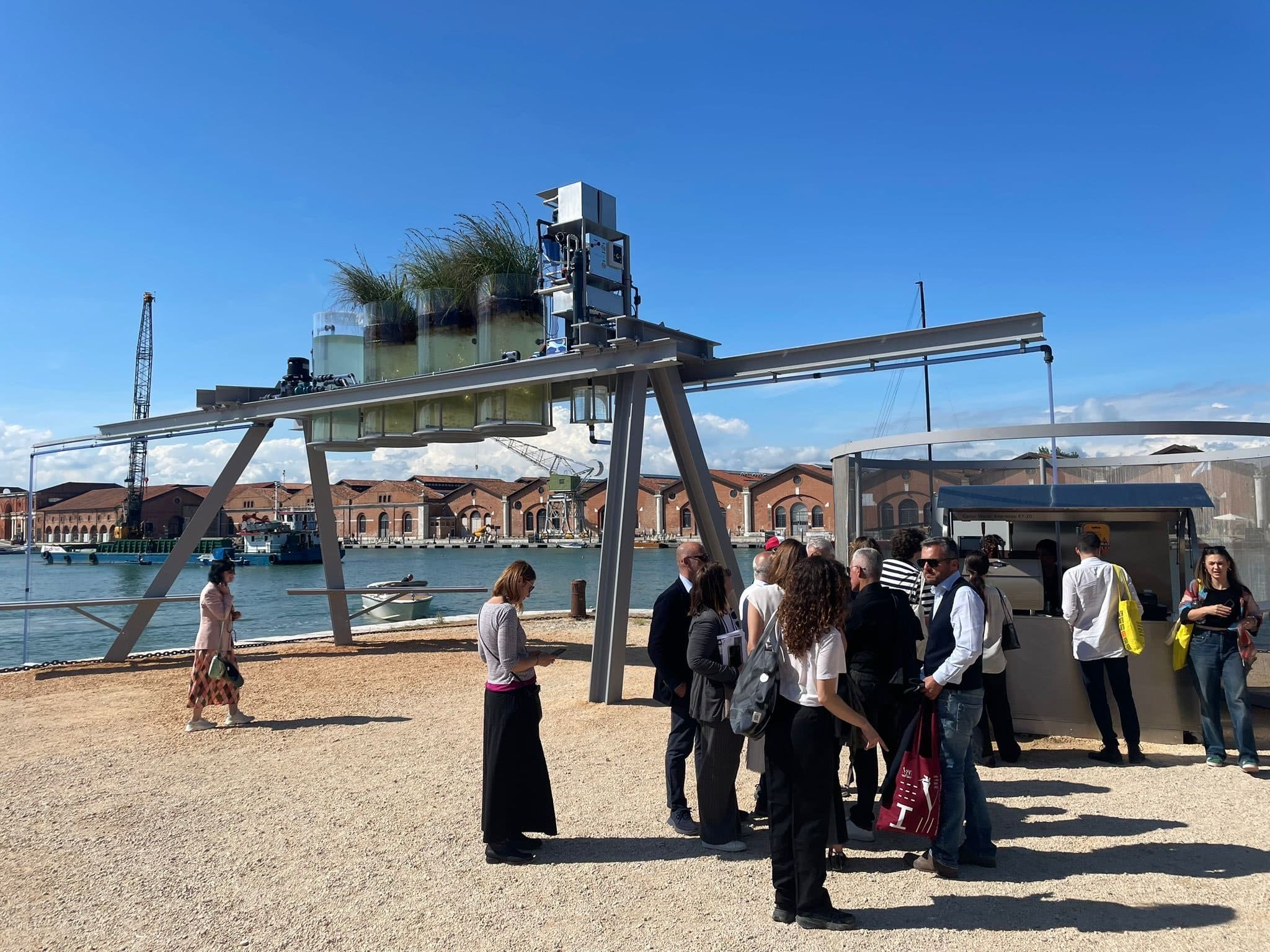
3. Institute of the Sun
My favourite pavilion? Without doubt, Uzbekistan’s ‘A Matter of Radiance’. Their 3rd expo, and their commitment to a greener, more resilient future (as the preface of their book says). I have to admit – I love love love shiny objects, but this felt bigger: it worked out as a massive solar furnace (Heliocomplex). It is most definitely an architectural and a scientific landmark.
As I’m obviously a big fan, I also love their mission: ‘embodying the forward-thinking spirit of modernism to envision a more equitable, knowledge-driven society’.
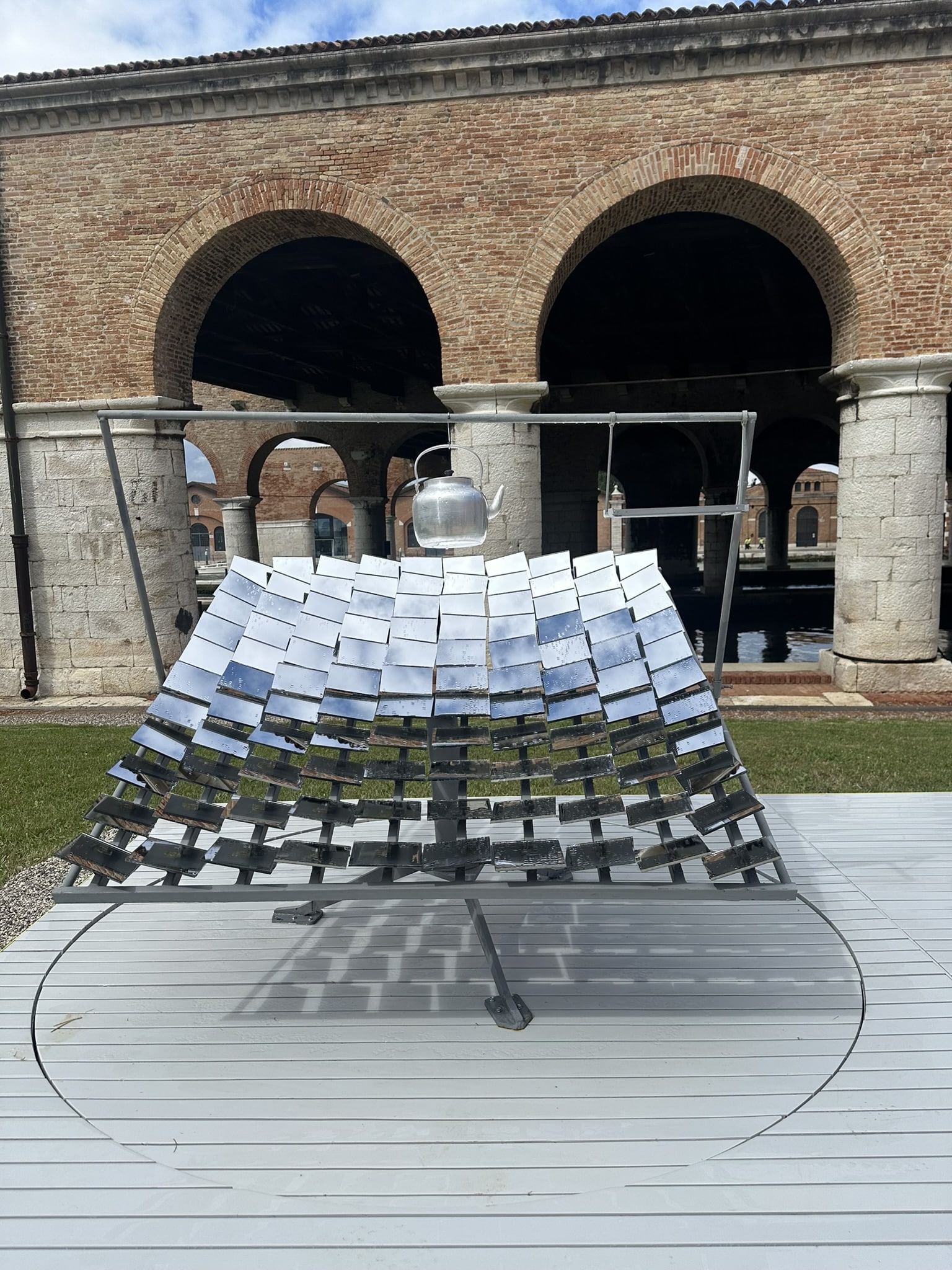
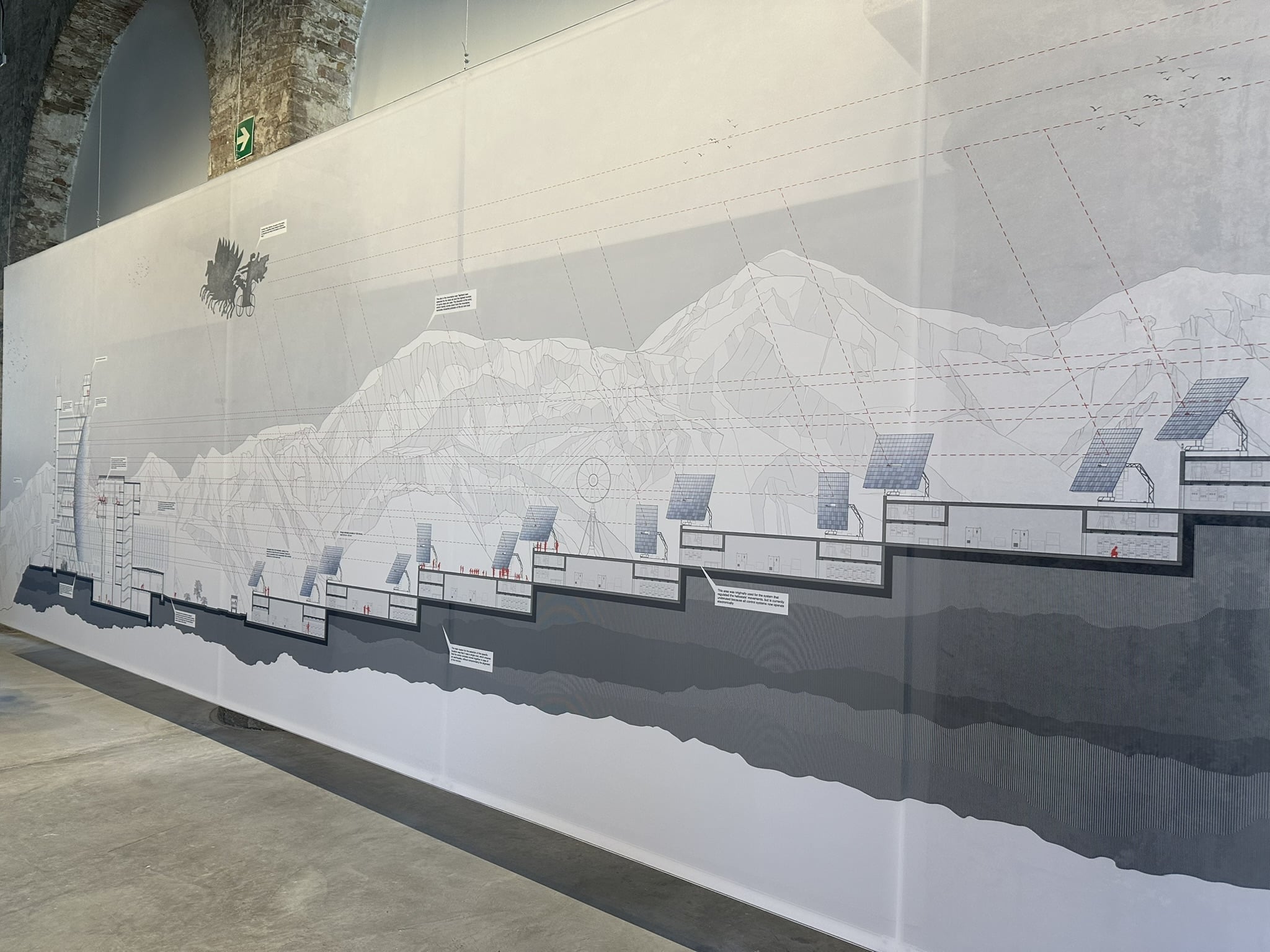
4. Nature & Urban Symbiosis
A recurring theme was the partnership between cities and nature. The idea of epidermitecture — façades as living skins — offered a new take on maintenance: not cleaning, but cultivating. Algae on buildings as a living layer, not a problem to be removed. The Finish pavilion also took another note on ‘maintaining’ a building.
The installation called ‘From plantation to pavilion: weaving ecologies in the Plantationocene — looked at the ecological and social damage caused by monoculture economies — but also pointed to solutions. As the world’s most eaten fruit, bananas produce vast waste streams. What if that waste became a building material?
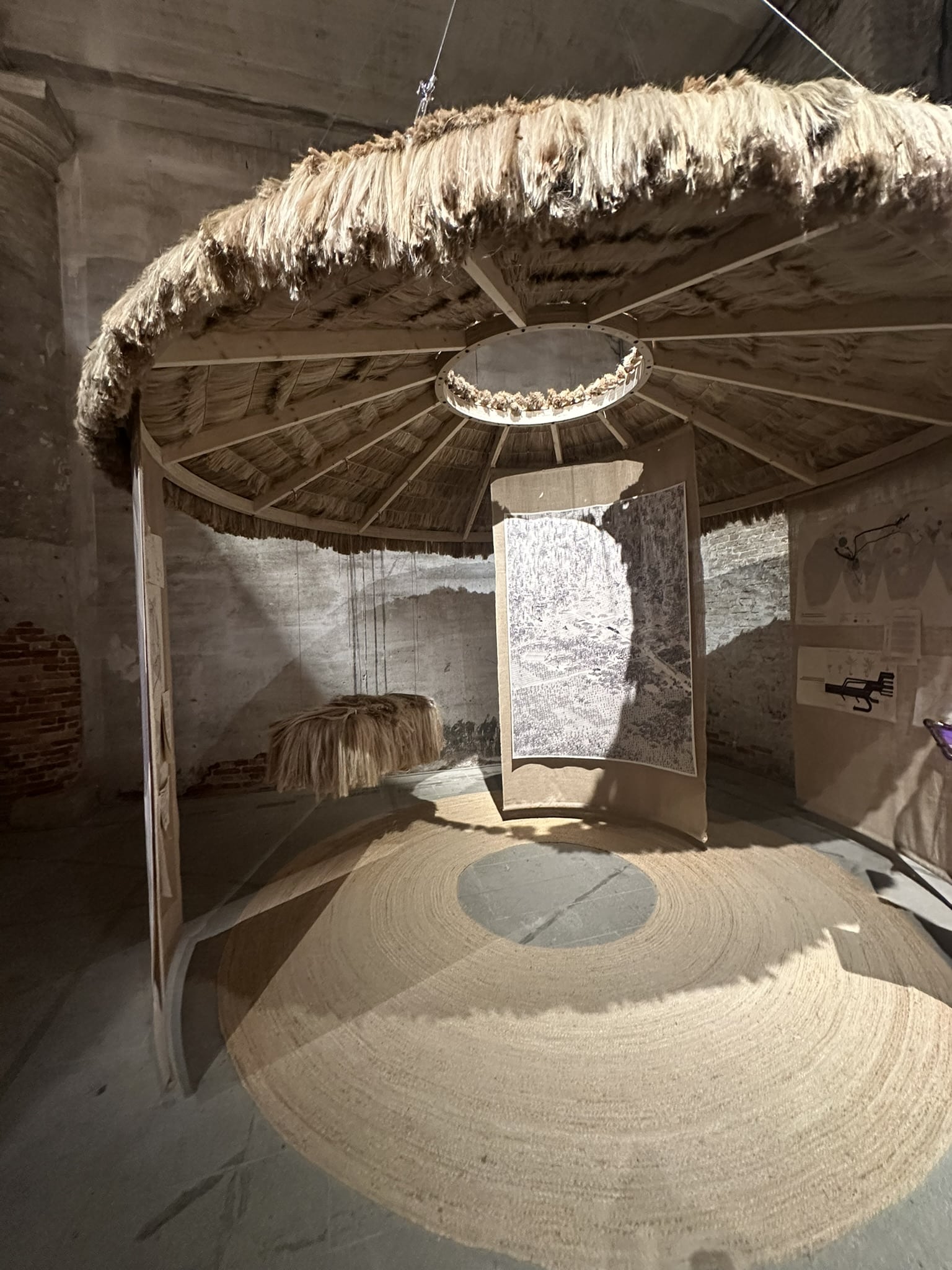
5. Rooted territories and shifting grounds
Some of the most insightful pavilions focused not on spectacle, but on how people relate to land, heat, and survival.
The Austrian pavilion: Agency For Better Living addressed affordable housing and land use, showing how deeply architecture is tied to ownership and migration. The Turkish pavilion (called Grounded) took this further, exploring land extraction and its spatial and social consequences.
The Brazilian pavilion – Re(Invention) was really compelling to me — showing how Indigenous communities in the Amazon live with water, and contrasting that with how water is now controlled in urban infrastructure systems. A powerful approach to water and its usage in both natural and urban landscapes.
And then there was the Heatwave Pavilion from Bahrain — a literal breath of cool air (I was cold!). Designed for comfort in rising temperatures, it was as refreshing physically as it was conceptually. Chilling at the pillows there to come back to temperature, I found out it even won a prize, .
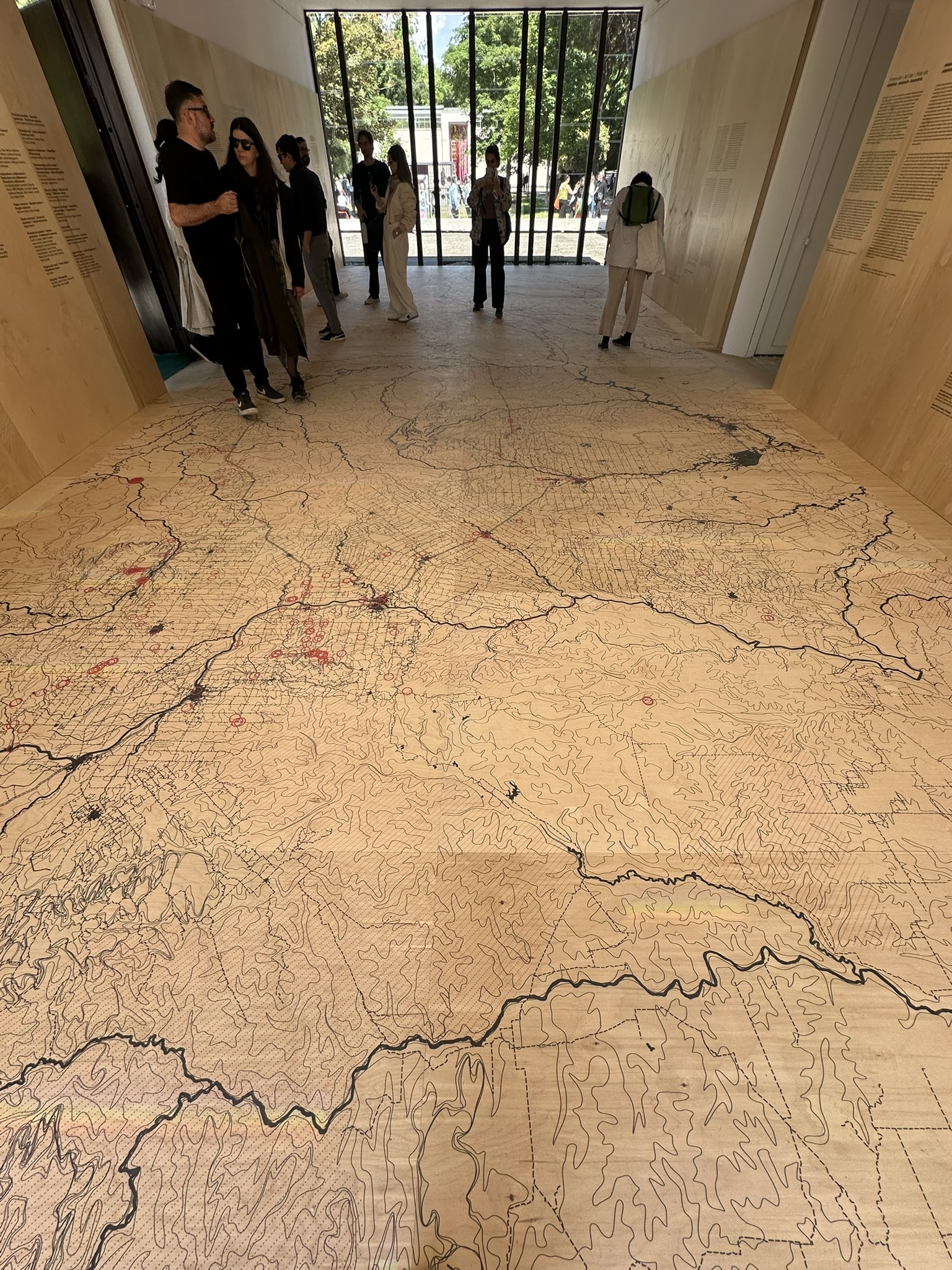
Conclusion: Designing with What’s Already There
The Venice Biennale offered many futures — some driven by AI, robotics, and speculative systems. But what resonated most with me were the projects rooted in natural intelligence, material simplicity, and human care. Not necessarily because they dominated the exhibition, but because they felt relevant, grounded, and honest.
This is my personal takeaway: that the transition we need may lie less in innovation, and more in reconnection. Low-tech thinking, biobased materials, and circular logics aren’t nostalgic — they’re essential if we want to build places that truly last.
